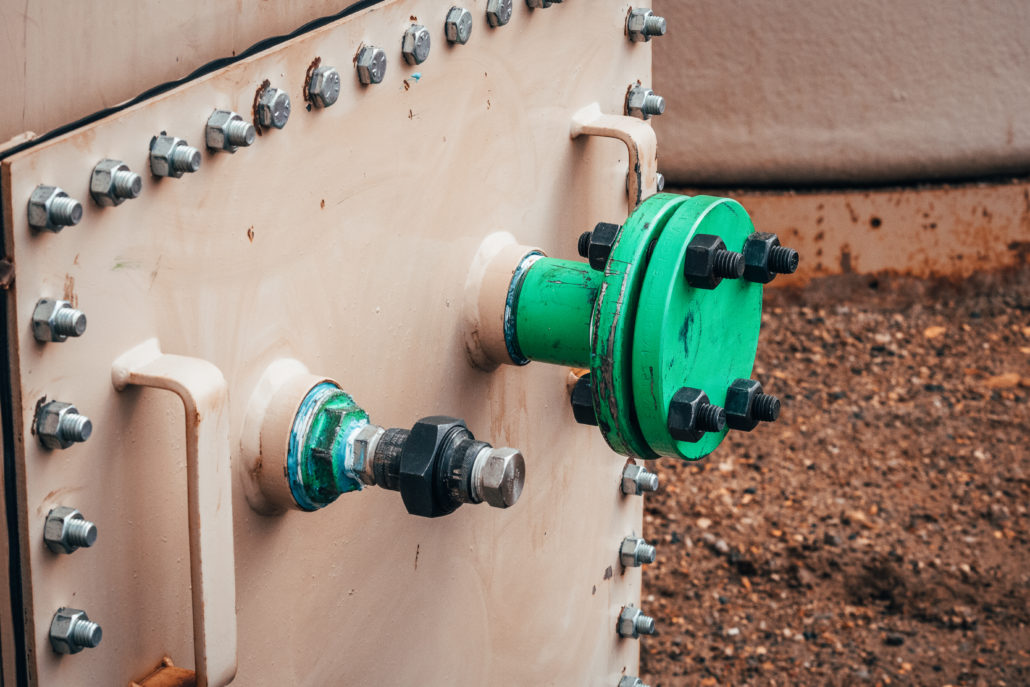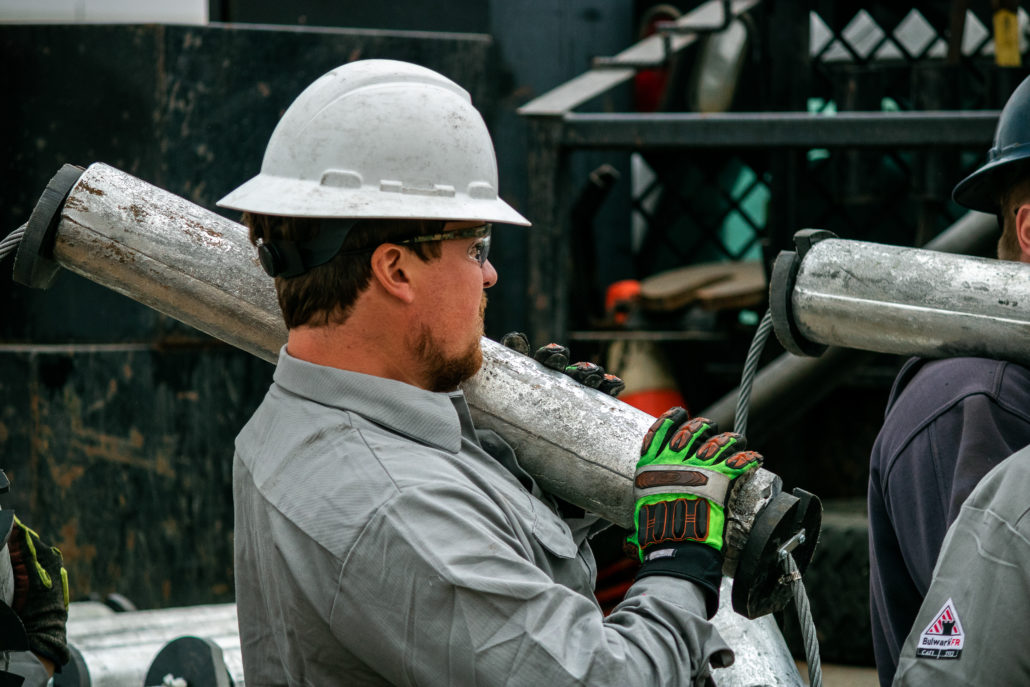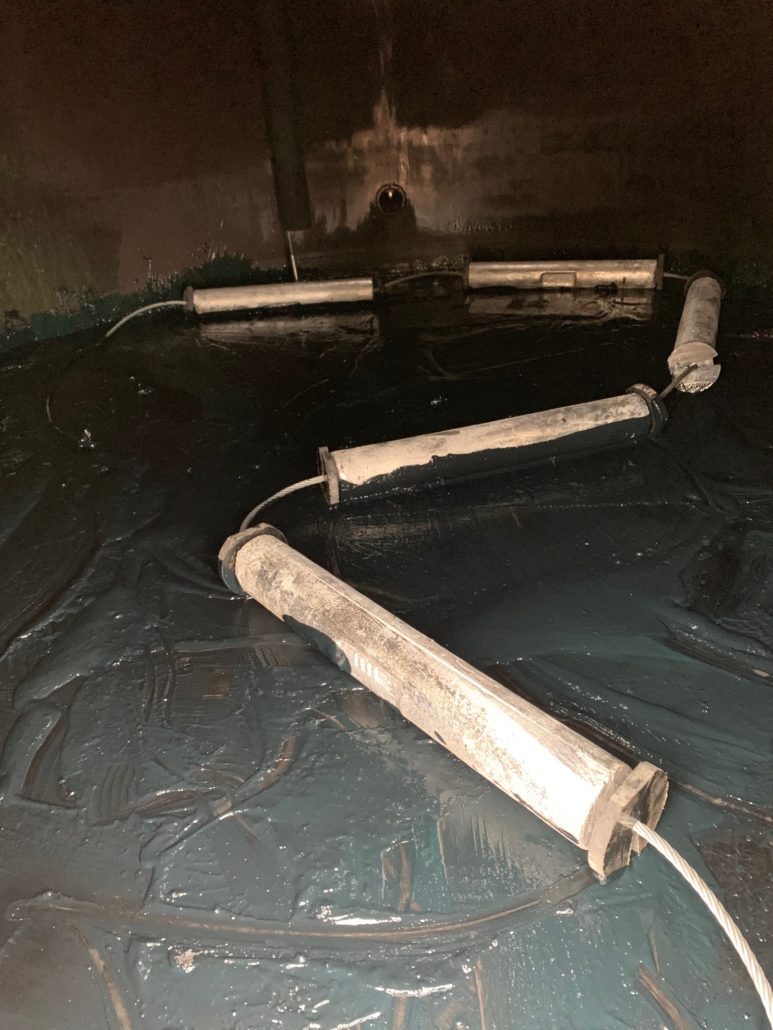Elite CP Systems
You’ve heard the commercial “Why monitor a problem if you cannot fix it” – we took that to heart as we were in the development process of the Elite Scanning System. Through several thousand inspections we have found a huge correlation between fire tube degradation rates and improper cathodic protection. If we can properly protect the fire tube we can significantly extend the life. We needed to figure out how to get the most consumable material inside the vessel placed in a way to be as efficient as possible – without modifying the vessel. We also found that monitoring the CP system inside the vessel is imperative so the anode can be replaced as soon as it stops protecting the fire tube. This is where the Elite Treater System was born.
Let's Talk Anodes
This sacrificial system was designed with the producer in mind. The problem with many of the existing anode systems is they do not provide enough cathodic protection for the heater treater vessel, and most importantly they do not protect the fire tube.
The existing systems include:
1. The block: This provides little exposure to the surface area of the anode. It is placed on a cinder block; the grounding mechanism is unreliable; it requires partial entry into the manway to be removed, which exposes staff to hazardous environments. During the changing process, maintenance personnel have to partially put their head into the hazardous environment to properly remove or replace the anode. When opening the manway, significant amounts of oxygen enter the vessel, which enhances the corrosion process.
2. Red/Blue Head: These anodes are an improvement to the block anode, but they have some significant drawbacks:
A) They are smaller.
B) They have an unreliable grounding system.
C) They do not allow for total consumption of the anode material. (due to the plastic cap)
D) Worst of all they crack and leak causing a spill.
The Green Head
The Green Head is an improved anode deployment method for sacrificial anodes that gives the following advantages:
A steel Victaulic or flanged interface, and is a self-grounding system. This is preferable to a plastic cap, and ensures that there is no risk of leakage. This is a one-time upgrade to the vessel.
The steel anode receiver allows for longer and heavier (larger diameter) anodes to be quickly deployed, giving longer life and higher current absorption. This translates to fewer anode changes and saves money.
Reference sensors deployed with the system, enable the actual level of cathodic protection on the fire tube to be measured. This allows accurate scheduling of anode replacements.
The anode consumption is lower cost per pound because the plastic anode cap is eliminated and the anode is nearly ONE THIRD larger.
Block anodes don't work because an anode needs to have its surface area exposed, the more surface area - the more current (protection) provided.
Many years ago, plastic heads were designed (Red & Blue heads) to interface with existing tank nozzles and provide electrical isolation of the anodes, such that the current output into the vessel could be measured. These are still in wide use today even though they have three fundamental drawbacks, please see comparison below:
Comparison
Green Heads
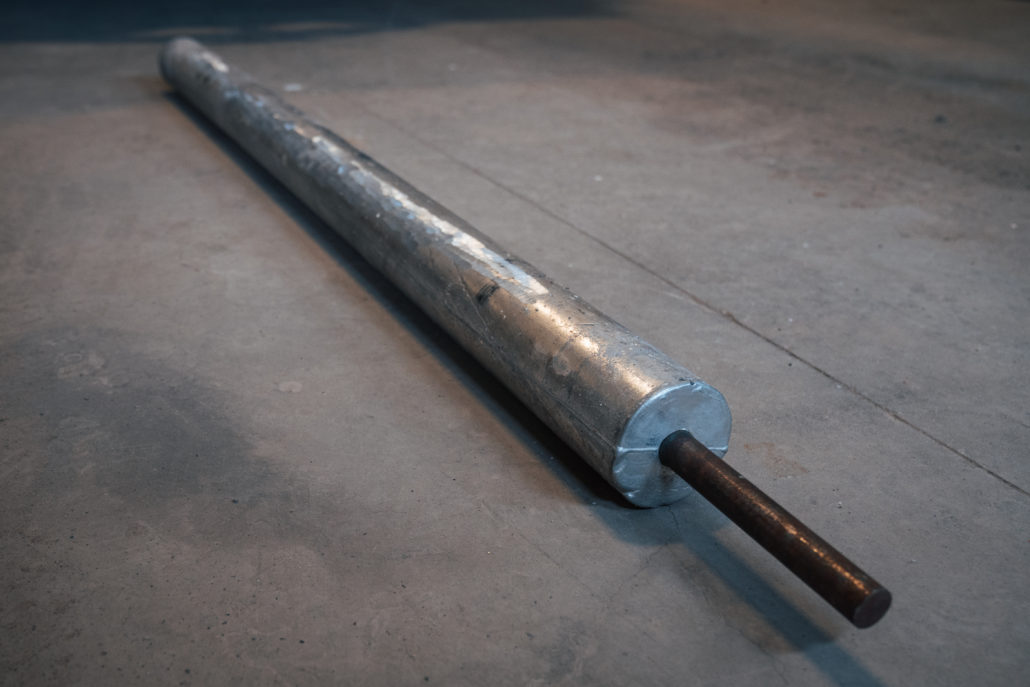
Green heads have a leak proof connection point - even when the anode is fully depleted.
Green head has a larger anode. 100% of which is exposed and working to protect the tank & fire tube.
Green head will provide 30-50% longer life.
Blue Heads
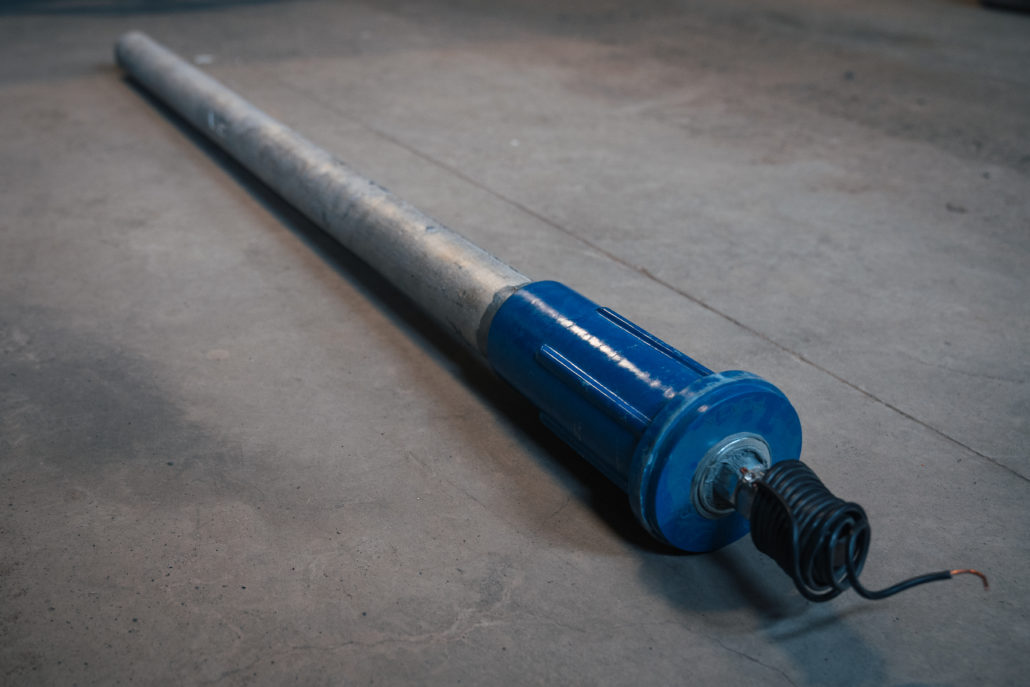
They are prone to leakage as the expanding anode corrodes and splits the cap.
They cover about 5lbs and 8" of anode material which reduces current and wastes money.
They restrict the diameter of anode that can be deployed to 3" ensuring that frequent replacement is required.
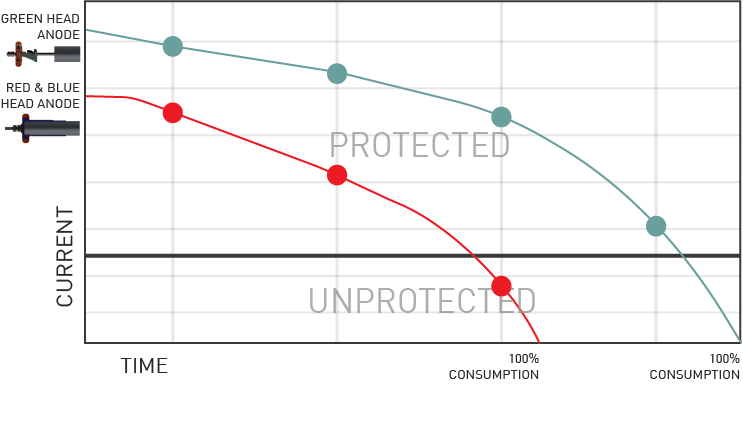
With the Green Head receiver in place, larger anodes can be deployed giving higher initial current and steady maintenance current. Larger diameter anodes extend the life and reduce the time between anode replacements. The receiver can be retrofitted to existing manways flanged or Victaulic nozzles to that receive even bigger anodes for greater cathodic protection.
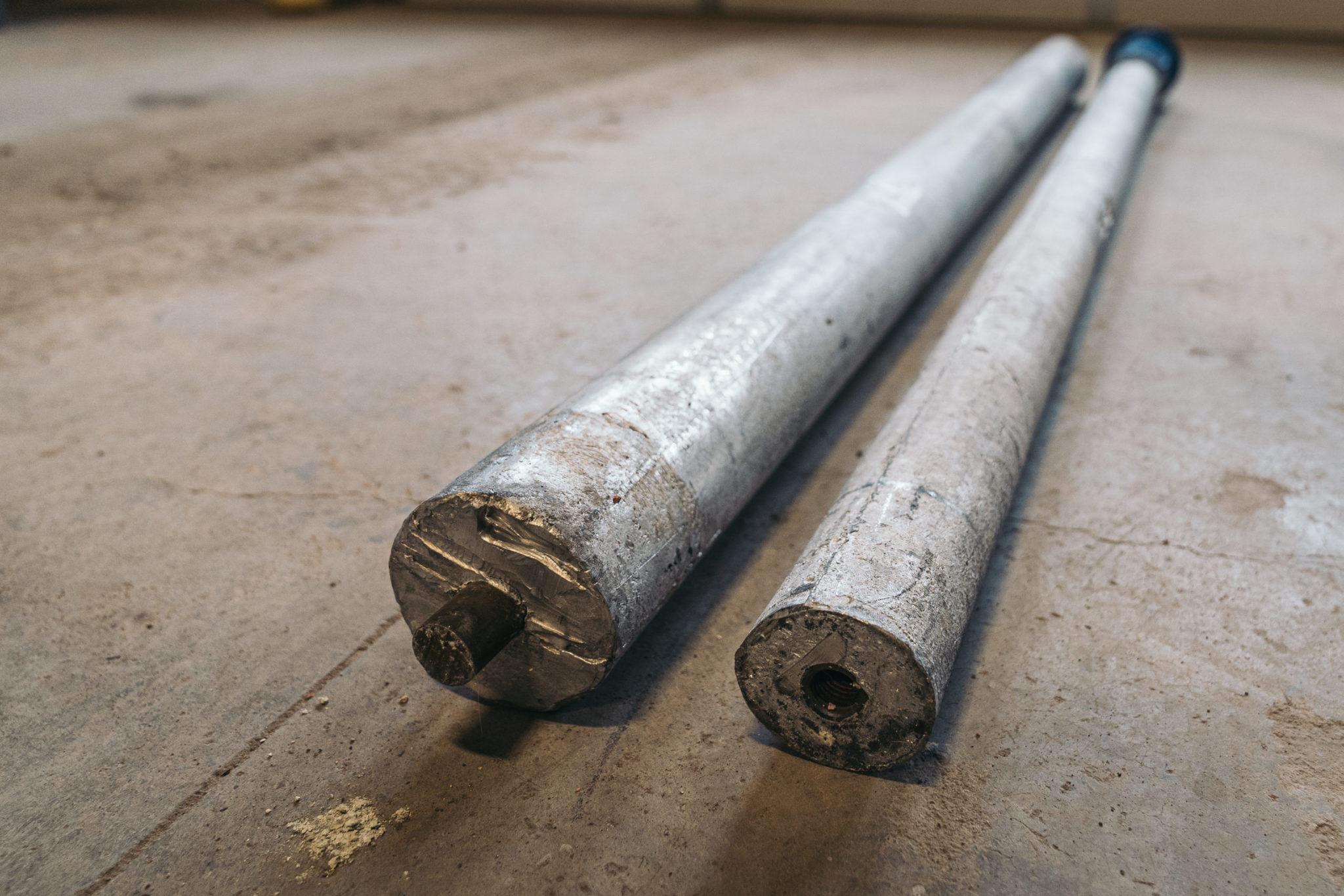
You can see in the image above that the Green Head (left) is significantly larger than the Blue head (right).
How do I monitor the anodes?
The Elite Sensor
The Elite Sensor is a reference electrode designed for positive monitoring of internal cathodic-protection systems for tanks and pressure vessels.
This sensor is suitable for a number of applications where the electrode needs to be located in a specific area, or where internal access is limited.
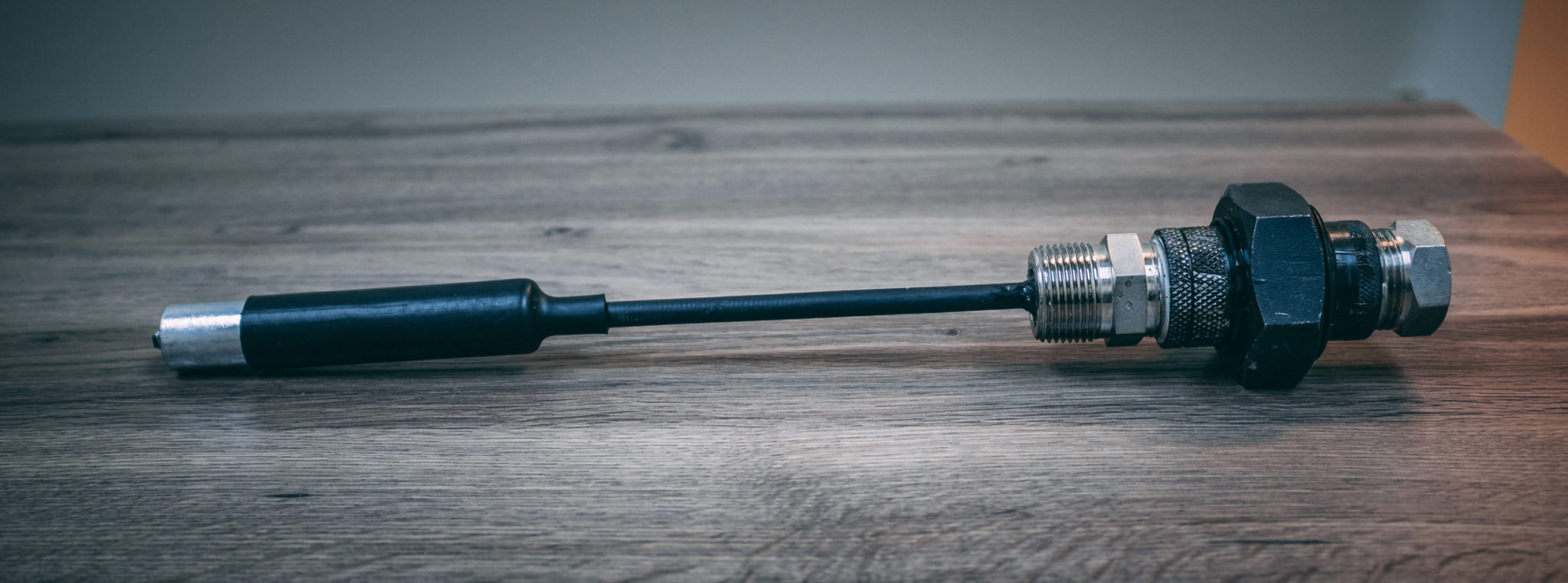
This reference electrode is an industry game-changer. For the first time, producers can monitor individual heater treaters to ensure that the vessel and fire tube are being cathodically protected.
- This sensor is easy to install, it can be retrofitted to work with the SCADA system or a standalone cellular monitoring device.
- It provides a real-time snapshot of the vessel's level of cathodic protection.
- It ensures that the anode is being monitored for its ability to provide protection to both the vessel and the fire tube.
- It is rugged and very inexpensive with a low monthly fee.
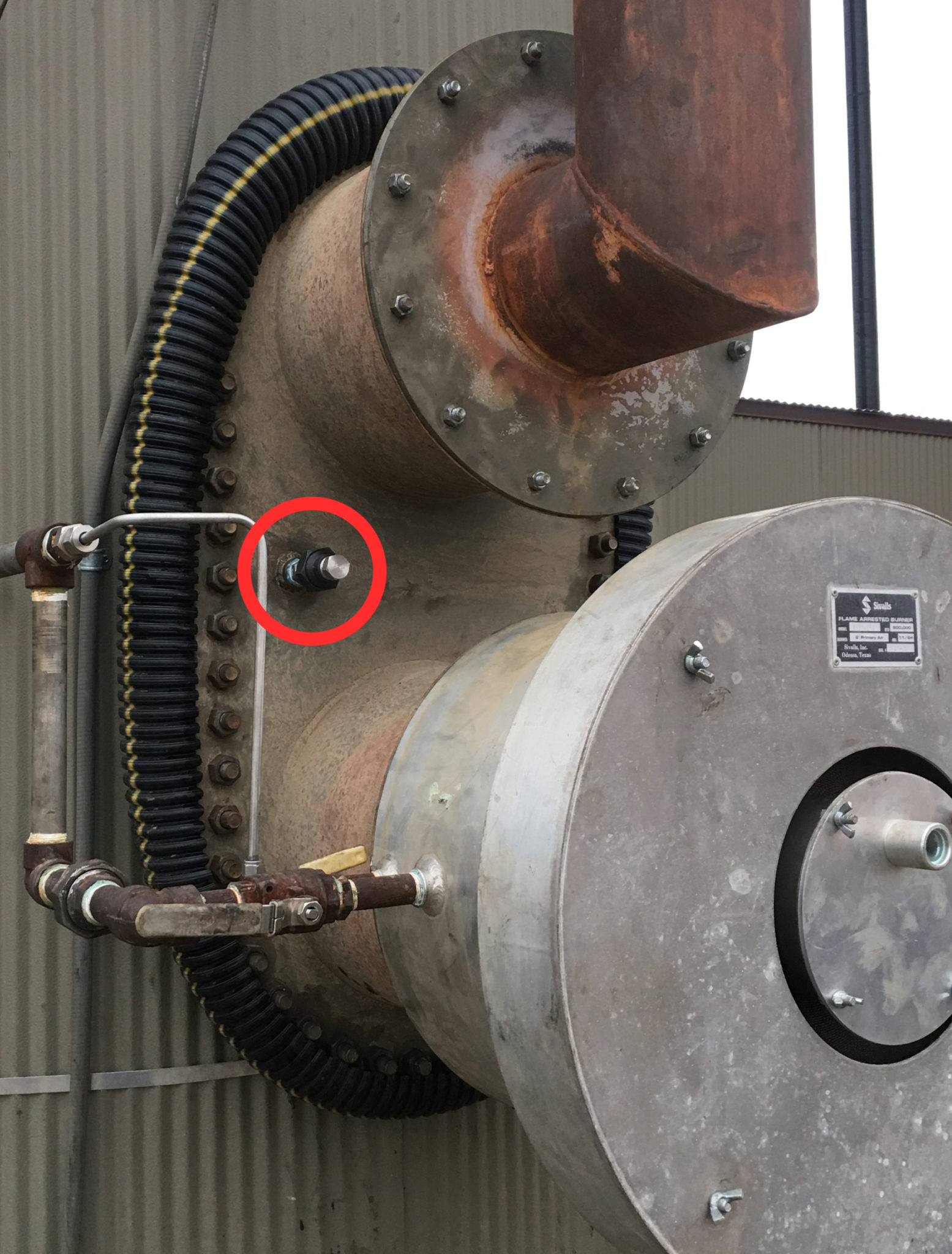
Front Side View
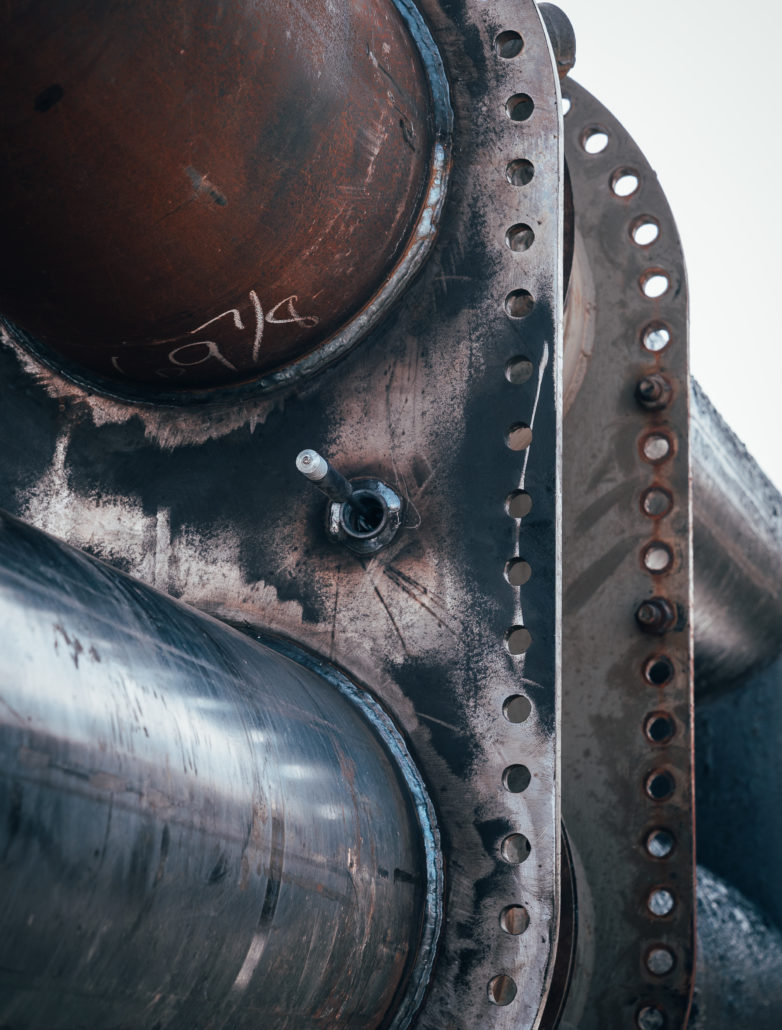
Back Side View
You are now able to monitor the Elite sensor remotely using the TrackerLT that was designed specifically for this by the folks over at Elecsys.
Remote Monitor for Cathodic Protection in Heater Treaters & Salt Water Tanks
Elite Energy Services has teamed up with Elecsys Corp to bring the Tracker LT as a Heater Treater Cathodic Protection (CP) monitoring device.
This unit has been custom built to monitor the Fire Tube so that we can proactively change anodes and avoid Fire Tube failures.
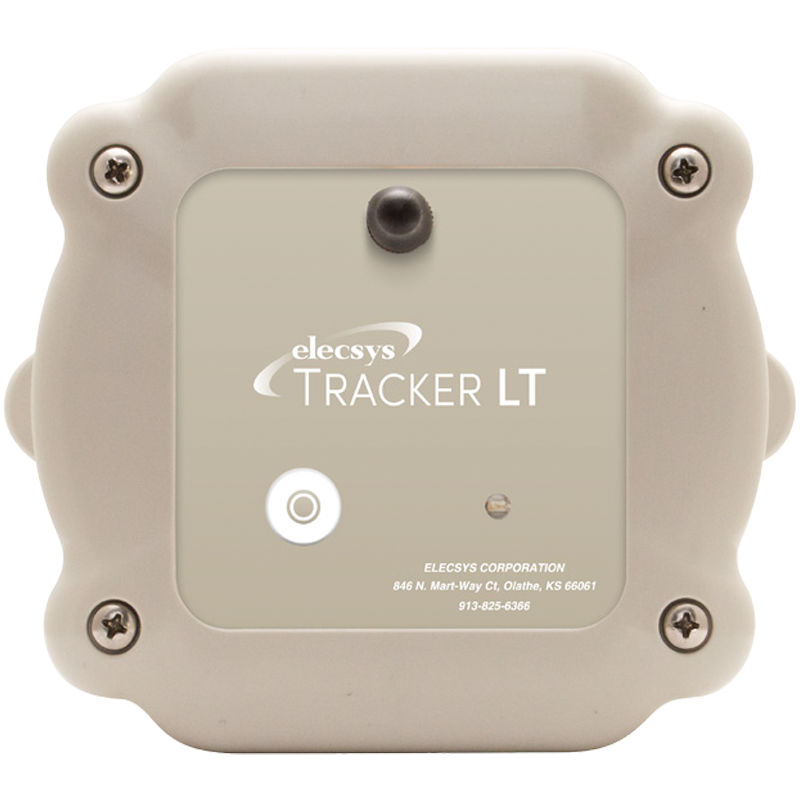
Features
Web-based data access
Programmable over the web
Easy Installation
Surge resistant circuit design
Ruggedized construction
Operates on a 3-5 year lithium battery
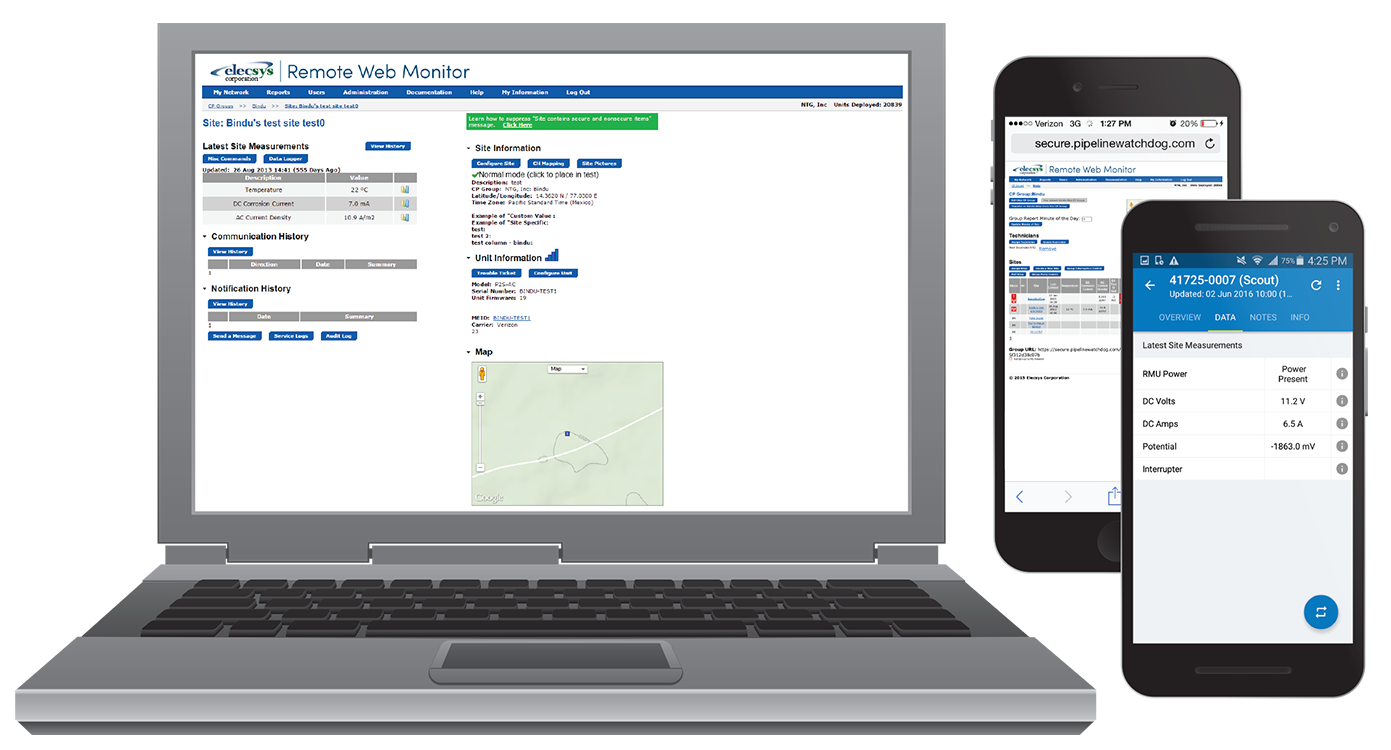
Applications
- Heater Treater Monitoring
- Salt Water Storage Tank Monitoring
Specifications
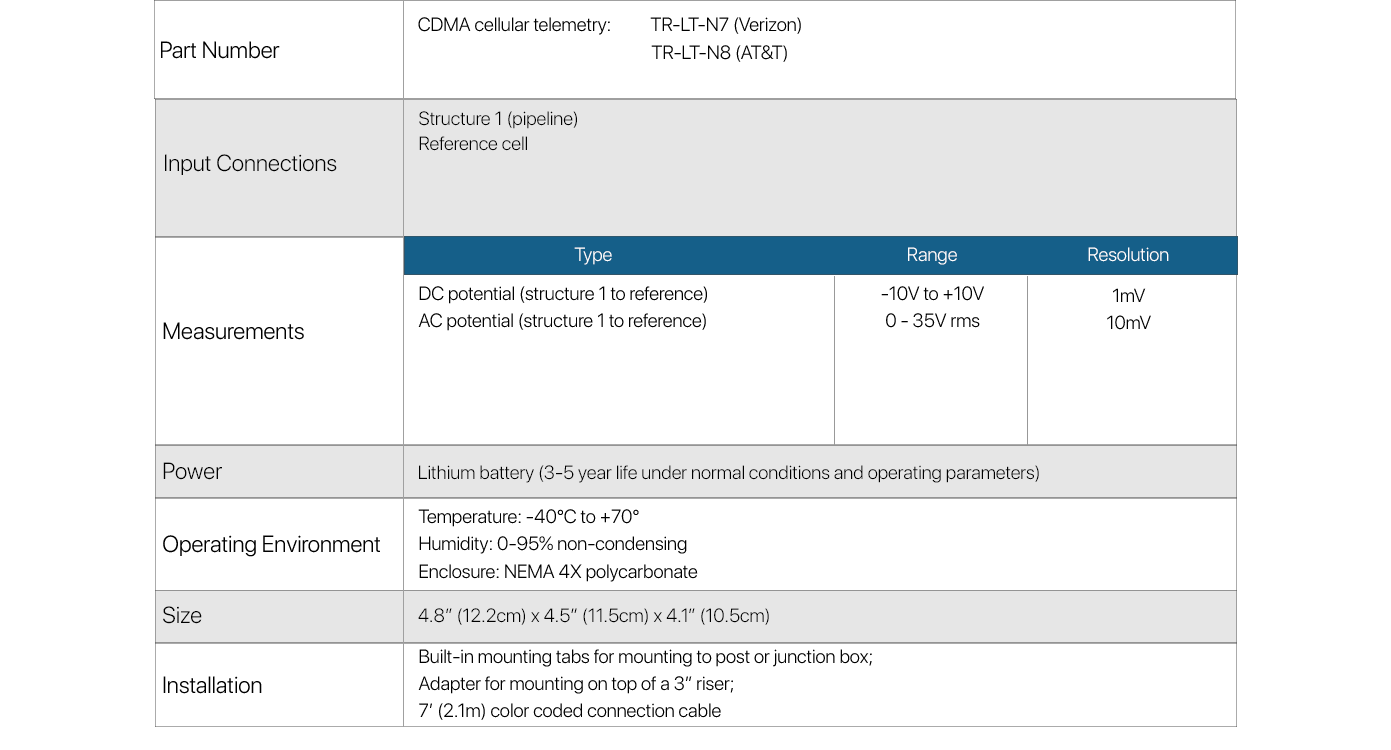
Monitoring potential inside the heater treater ensures that the fire tube is always being protected (NACE SP0575). Elite Energy had these units custom built just for this purpose. By proactively changing anodes, a producer can avoid the costly effects of a fire tube failure. The Tracker LT’s design allows for simple cost-effective monitoring. The unit will “wake up” every 4 hours and measure the vessel’s potential, if it’s within the acceptable parameters – the unit returns to hibernation mode. If the reading indicates that the vessel is out of acceptable cathodic range, it will send an alert via email and text. The Tracker LT will send data bi-monthly via cell phone link to the Heater Treater Management Database. This information can be used to track and trend individual heater treaters consumption of anode material.
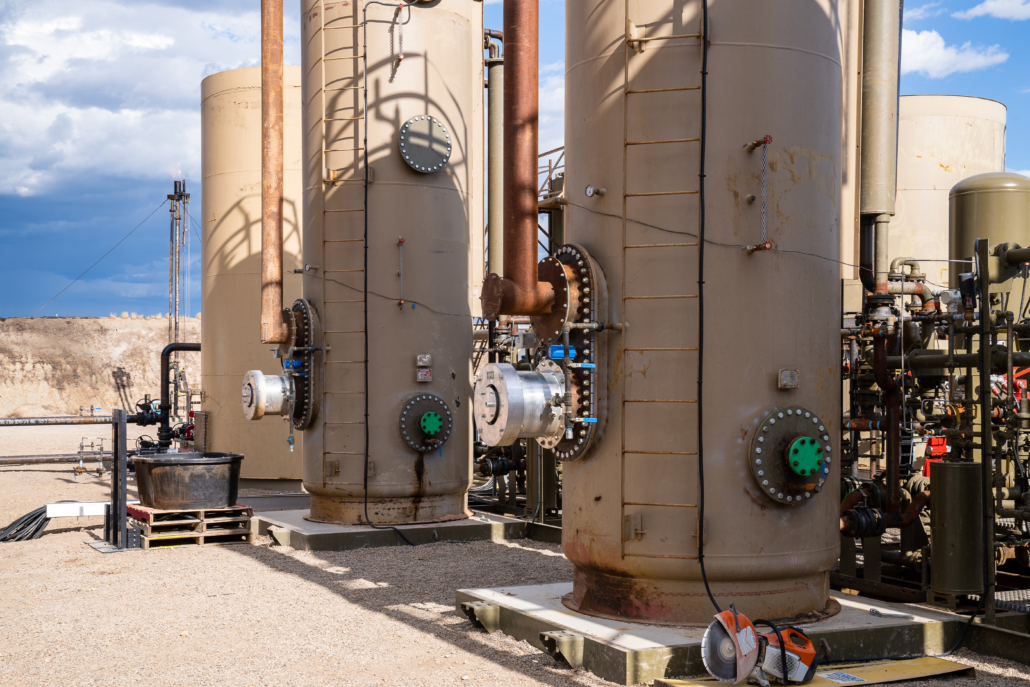
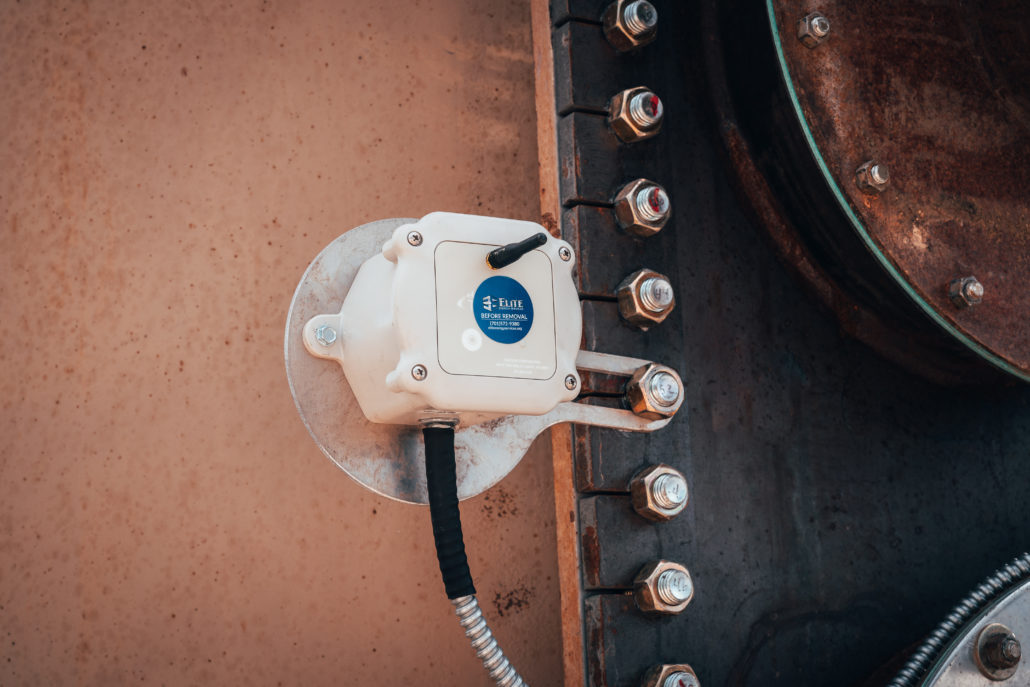
This technology allows you to “look” inside a heater treater. It takes the guess work out of cathodic protection. Elite’s Tracker LT is the most reliable and accurate method available to extending the life of a fire tube, by monitoring the output of an anode. It’s well understood that an effective anode is the most efficient way to control corrosion.
THE TRACKER LT CAN HELP PREVENT FIRE TUBE FAILURES
Tankgard Tank Links
Tankgard has improved cathodic protection systems used in Salt Water storage tanks. The Tank Link system can be deployed without entering the vessel and provides a high level of cathodic protection inside steel salt water tanks.
First the tank is evaluated for coating integrity and vessel size. Then this information is used to calculate the amount of consumable material needed to fully protect the vessel.
Next, the link system is installed from the thief hatch and tethered to the manway hatch below. The Links will sit in the lower portion of the tank to ensure optimization of the cathodic protection system.
Last, a sensor is installed to monitor the level of protection the tank is receiving and also to let the producer know when the anode needs to be changed.
Advantages
Allows anode material to be introduced in large quantities and for high current demand through limited access points.
Gives increased life over conventional anode designs.
Cost effective solution. There is no tank entry required for installation.
Tank links are adaptable to many different vessel geometries.
